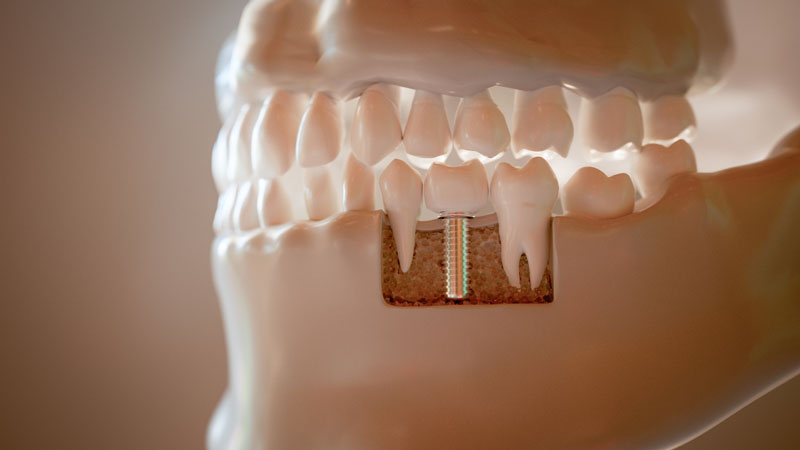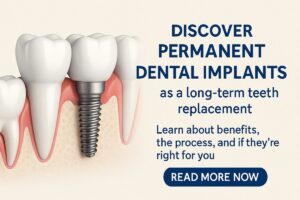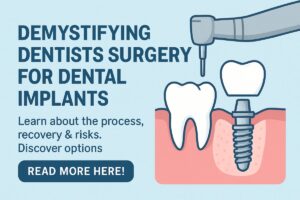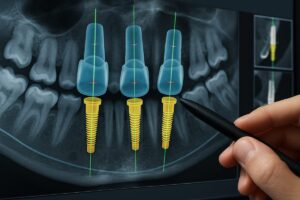If you are missing more than one tooth, a multiple tooth implant can restore chewing, speech, and confidence. This guide explains what a multiple tooth implant is, why you might need one, the main treatment options, and clear next steps so you can plan care with confidence.
Read on to compare solutions from individual implants to full-arch prostheses, learn who makes a good candidate, understand the typical timeline, and see advanced options when bone is limited.
Types of multiple tooth implant options
Individual implants with separate crowns
Individual implants replace each missing tooth with its own implant and crown. This works well when missing adjacent teeth are limited in number and you have enough bone. Pros: excellent long-term stability, preserves nearby teeth, and easy to clean. Cons: higher cost and longer treatment time when many teeth are missing.
Implant-supported bridge
An implant-supported bridge uses two or more implants to hold a bridge that replaces several teeth. It’s common when you need to replace a run of missing teeth without placing an implant for every tooth. Pros: fewer implants than individual crowns, lower cost than many single implants, strong function. Cons: bridge hygiene requires careful cleaning under the pontic areas and occasional maintenance.
Implant-retained partial denture
These are removable or fixed options that snap or attach to implants. Removable implant-retained partials can be taken out for cleaning. Fixed versions stay in the mouth. Pros: better retention than traditional dentures and easier hygiene for removable designs. Cons: removable versions feel different than fixed teeth and may need adjustments.
All-on-X (full-arch implant prosthesis)
All-on-X replaces a full arch using typically 4–6 implants to support a fixed prosthesis. It’s a fast, predictable solution for people missing many or all teeth. Immediate loading is often possible, giving provisional teeth the same day as surgery. Pros: restores full function and appearance quickly. Cons: higher upfront cost and requires careful planning for long-term success.
Who is a candidate for multiple tooth implant treatment
Most adults who are healthy enough for minor oral surgery can be candidates. Key factors include:
- Medical and oral health: Controlled chronic conditions (diabetes, heart disease) are acceptable in many cases; uncontrolled disease can raise risks. Active gum disease should be treated first.
- Bone volume and density: Adequate bone is ideal, but options exist for those with bone loss.
- Lifestyle and expectations: Consider chewing needs, cosmetic goals, budget, and how quickly you want final teeth.
Treatment steps and typical timeline for multiple tooth implant care
Consultation and 3D imaging
The first visit includes medical review, oral exam, and a CT/3D scan. Imaging shows bone quality, sinus anatomy, and critical nerves. This step sets a safe, predictable plan.
Treatment planning and digital planning
Plans are made digitally using scans and software. Surgical guides and provisional teeth can be fabricated before surgery. Your team may choose immediate loading (temporary teeth placed same day) or a staged approach based on bone and healing needs.
Surgery and healing
Surgery usually takes a few hours depending on complexity. Typical healing is 3–6 months for bone to integrate with implants before final restorations, though immediate protocols shorten the time to provisional teeth. Follow-up visits monitor healing and comfort.
Maintenance and long-term care
Good home care and regular professional cleanings keep implants healthy. Avoid smoking, maintain gum health, and expect regular checkups. With proper care, implants can last decades.
Advanced solutions when bone is limited
If bone is insufficient, options include bone grafting and sinus lifts to rebuild volume. When traditional grafting isn’t ideal, alternative anchoring implants can be used:
- Zygomatic implants: Anchor in the cheekbone for upper jaws with severe bone loss.
- Pterygoid implants: Placed into the back upper jaw for extra support without sinus grafts.
- Transsinus implants: Cross the sinus when anatomy allows, avoiding large grafts.
- Subperiosteal implants: Sit on top of the bone under the gum for patients who cannot have grafts.
Each option has specific pros and cons. A specialist evaluates which one fits your anatomy and goals.
Why a specialist and digital workflow matter for complex multiple tooth implant cases
Complex cases carry higher risks that are best managed by a clinician with advanced implant training. A board-certified implant specialist has additional surgical and prosthetic education and experience, which lowers complication rates in difficult situations. Full digital care—facial scanners, intraoral scanners, and photogrammetry—improves fit, esthetics, and speed. Digital All-on-X workflows reduce surprises and coordinate labs and referring dentists more smoothly.
How to choose the right plan and next steps
Ask these questions during a consultation:
- Are you a board-certified implant specialist and how many similar cases have you done?
- Do you use 3D imaging and a full digital workflow?
- What are my options if I have limited bone?
- Can you show before-and-after photos and patient references?
- What is the estimated timeline, costs, and financing options?
Practical logistics to consider: many practices offer free consultations and CT scans. Out-of-state patients often meet the surgeon the day before surgery and return home the day after, with local dentists managing short-term postoperative care and the specialist returning for final checks months later.
Ready to explore your options?
Dr. Michael Fioritto is one of about nine board-certified implant specialists in Ohio and treats complex cases others may decline. He offers free consultations and CT scans, uses facial and intraoral scanners and photogrammetry, and places advanced implants (zygomatic, pterygoid, transsinus, subperiosteal) when needed. Many out-of-state patients travel for his care with a streamlined plan for pre-op, surgery, and follow-up. Request a free consultation or a CT scan to get a custom plan for your multiple tooth implant needs.






